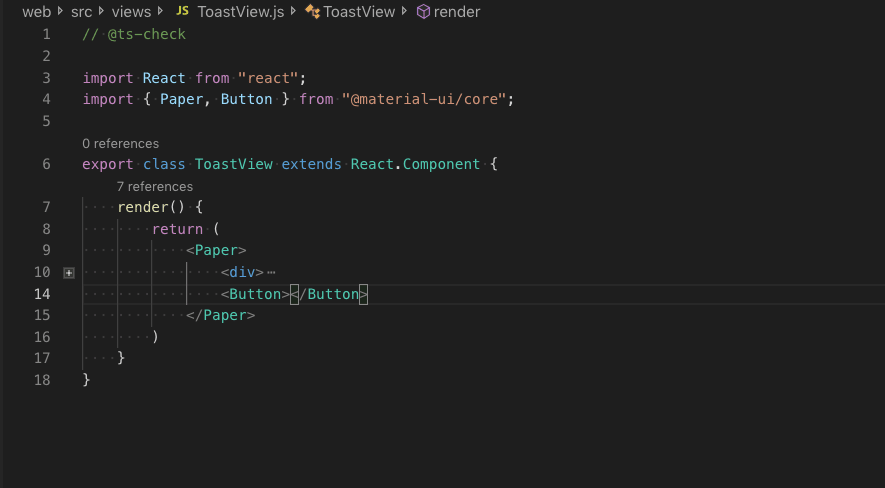Introduction
In the world of collaborative software development, consistency is king. Debates over code style—tabs versus spaces, single versus double quotes, where to place a curly brace—are as old as programming itself. These “bikeshedding” discussions, while seemingly trivial, consume valuable time and energy that could be spent on solving real business problems. This is where an opinionated code formatter becomes an indispensable tool. Enter Prettier, the de facto standard for code formatting in the JavaScript ecosystem and beyond.
Prettier isn’t just a linter; it’s a code styler. It parses your code and re-prints it from scratch, enforcing a consistent style across your entire codebase. By taking styling decisions out of the developer’s hands, it allows teams to focus on what truly matters: building great software. In today’s fast-paced development landscape, where toolchains are powered by bundlers like Vite and Webpack, and frameworks like React and Vue.js dominate, integrating a tool like Prettier is no longer a luxury—it’s a necessity for maintaining a clean, readable, and professional codebase. This article dives deep into the latest Prettier News, covering its core concepts, advanced configurations, and seamless integration into a modern development workflow.
The Core Philosophy of Prettier: Why Opinionated Formatting Wins
Prettier’s primary strength lies in its opinionated nature. Unlike linters such as ESLint, which offer thousands of configurable rules, Prettier provides only a handful of options. This deliberate design choice is meant to stop the endless debates and enforce one “good enough” style. The goal is to make code look the same, regardless of who wrote it, making code reviews faster and onboarding new developers easier.
What is Prettier?
At its heart, Prettier is a code formatter that supports a vast array of languages, including JavaScript, TypeScript, JSX, CSS, HTML, JSON, Markdown, and more. It works by parsing your source code into an Abstract Syntax Tree (AST) and then re-printing that AST using a set of predefined rules. This process ensures that all output is consistent and conforms to Prettier’s style guide. This approach is fundamental to its success, as it doesn’t just fix small style violations; it completely restructures the code’s layout for maximum readability.
Getting Started: A Basic Setup
Integrating Prettier into a project is straightforward. First, you add it as a development dependency to your project.
# Using npm
npm install --save-dev --save-exact prettier
# Using yarn
yarn add --dev --exact prettier
# Using pnpm
pnpm add --save-dev --exact prettierThe --save-exact flag is recommended by the Prettier team to ensure that all developers on a project use the exact same version, preventing subtle formatting differences. Once installed, you can run it from the command line. Consider this poorly formatted JavaScript file:
// messy-code.js
const myObject = {foo:'bar', baz: 'qux',
longPropertyName: 123};
function myFunction( arg1,arg2 ){
console.log(arg1, arg2);
}You can format this file by running:
npx prettier --write messy-code.jsPrettier will transform the file into this clean, consistently formatted version:
// messy-code.js (after formatting)
const myObject = {
foo: "bar",
baz: "qux",
longPropertyName: 123,
};
function myFunction(arg1, arg2) {
console.log(arg1, arg2);
}Integrating with Your Editor
While the CLI is useful, the real power of Prettier is unlocked when integrated directly into your code editor. Extensions for popular editors like VS Code, WebStorm, and Sublime Text allow you to format your code automatically on save. This “format on save” workflow provides instant feedback and ensures that every line of code you commit is already perfectly formatted, making it a cornerstone of modern development practices, whether you’re working on a Next.js News project or a simple vanilla JS application.
Advanced Configuration and the Plugin Ecosystem
While Prettier is intentionally light on options, it provides enough flexibility to suit most teams’ preferences. This is managed through a configuration file and a powerful plugin system that extends its capabilities to new tools and languages.
Customizing Prettier: The .prettierrc File

To ensure consistent formatting across your team, you should create a configuration file named .prettierrc.json (or .js, .toml) in your project’s root directory. This file houses any overrides to Prettier’s default settings.
Here are some of the most commonly adjusted options:
printWidth: The line length the printer will wrap on. The default is 80.tabWidth: The number of spaces per indentation-level. The default is 2.useTabs: Indent lines with tabs instead of spaces. Default isfalse.semi: Print semicolons at the ends of statements. Default istrue.singleQuote: Use single quotes instead of double quotes. Default isfalse.trailingComma: Print trailing commas where valid in multi-line statements. Default is"all".
Here is an example .prettierrc.json file:
{
"printWidth": 100,
"tabWidth": 2,
"singleQuote": true,
"semi": true,
"trailingComma": "es5",
"bracketSpacing": true,
"arrowParens": "always"
}Ignoring Code: The .prettierignore File
Just like .gitignore, a .prettierignore file tells the Prettier CLI and editor integrations which files and directories to ignore. This is crucial for excluding generated files, build artifacts, and dependency folders.
A typical .prettierignore file might look like this:
# Build output dist build .next .nuxt # Dependencies node_modules # Lock files package-lock.json yarn.lock pnpm-lock.yaml # Environment variables .env
The Power of Plugins: Extending Prettier’s Reach
One of the most exciting areas of Prettier News is its thriving plugin ecosystem. Plugins allow Prettier to support languages and tools not included by default. For example, if you’re working with Tailwind CSS, the prettier-plugin-tailwindcss automatically sorts your utility classes in the recommended order, which is a massive productivity boost. Similarly, frameworks like Svelte have dedicated plugins (prettier-plugin-svelte) to handle their unique file formats. This extensibility is vital for projects using modern tools like Svelte News or even specialized libraries like Three.js News for 3D graphics.
Installing a plugin is as simple as adding it to your project’s dev dependencies. Prettier automatically detects and uses plugins from your node_modules folder.
npm install --save-dev prettier prettier-plugin-tailwindcssPrettier in a Modern Toolchain: ESLint, Git Hooks, and CI/CD
Prettier truly shines when it’s integrated into a comprehensive development workflow. This means making it work alongside other tools like linters, automating it with Git hooks, and enforcing it in your continuous integration pipeline.
Prettier vs. ESLint: A Perfect Partnership
A common point of confusion for developers is the difference between Prettier and ESLint. The two tools are not competitors; they are partners with distinct roles:
- ESLint: A linter that analyzes code for potential bugs, enforces coding standards, and identifies problematic patterns (e.g., unused variables, incorrect function calls).
- Prettier: A code formatter that is only concerned with code style and layout (e.g., line length, spacing, quotes).
The best practice is to use ESLint for code quality and Prettier for formatting. To prevent conflicts, you can use eslint-config-prettier, a configuration that disables all of ESLint’s stylistic rules that Prettier already handles. This lets each tool do what it does best.
First, install the package:
npm install --save-dev eslint-config-prettierThen, add "prettier" to the "extends" array in your .eslintrc.json file. Make sure it’s the last item in the array to override other configs.
{
"extends": [
"eslint:recommended",
"plugin:react/recommended",
"prettier"
]
}This setup is essential for any modern project, from React News applications built with Create React App or Vite to full-stack frameworks like RedwoodJS News.

Enforcing Style with Git Hooks
To ensure that no unformatted code ever gets committed to your repository, you can use Git hooks. A pre-commit hook can automatically run Prettier on any staged files before a commit is created. Tools like husky and lint-staged make this process incredibly simple.
After installing these packages (npm install --save-dev husky lint-staged), you can configure them in your package.json:
{
"scripts": {
"prepare": "husky install"
},
"lint-staged": {
"**/*.{js,jsx,ts,tsx,json,css,md}": [
"prettier --write"
]
}
}This configuration tells lint-staged to run prettier --write on all staged files with the specified extensions. With this in place, your team can never accidentally commit unformatted code again.
CI/CD Integration
The final line of defense is your Continuous Integration (CI) pipeline. By adding a step that checks for formatting, you can fail builds if any unformatted code slips through. This is done by running Prettier with the --check flag instead of --write.
In a GitHub Actions workflow, this step would look like this:
- name: Check Code Formatting run: npx prettier --check .
This command will check all files in the project and exit with a non-zero status code if any file needs formatting, causing the CI build to fail. This ensures that the code in your main branch is always pristine, a critical practice for teams working with any modern stack, from Angular News to Node.js News backends using frameworks like Fastify News or AdonisJS News.
The Latest Prettier News and Best Practices
The web development ecosystem is constantly evolving, and Prettier is no exception. Staying updated with the latest trends and best practices ensures your team reaps the full benefits of automated code formatting.
Recent Updates and Performance Gains
Recent major releases, like Prettier 3.x, have introduced significant changes. One of the biggest was the move to a pure ESM package and the requirement for plugins to be ESM as well. This aligns Prettier with the broader JavaScript ecosystem’s shift towards ES Modules. These updates often bring performance improvements, better language support, and subtle formatting tweaks. Keeping an eye on the official blog for Prettier News is crucial to understanding these changes and migrating your projects smoothly. The performance enhancements are especially welcome in large monorepos managed with tools that get their own share of Turbopack News and updates.
The Broader Ecosystem: From Node.js to Deno and Bun
Prettier’s relevance extends across the entire JavaScript landscape. It’s a staple in server-side development with Node.js, and its principles are influencing tools in newer runtimes like Deno and Bun. In fact, Bun News often highlights its built-in, high-performance formatter. However, many teams still prefer Prettier for its extensive plugin ecosystem and cross-language consistency, making it a valuable tool even when a runtime provides a native alternative. This consistency is invaluable whether you’re writing a backend service with Koa News or a desktop app with Electron News or Tauri News.
Best Practices for Teams
To maximize Prettier’s effectiveness, teams should adopt these best practices:
- Commit a Shared Configuration: Always commit a
.prettierrcfile to your repository to ensure everyone uses the same rules. - Use an Ignore File: A
.prettierignorefile is essential to prevent formatting of generated or third-party code. - Integrate with Your Editor: Encourage everyone on the team to use the Prettier extension with “format on save” enabled.
- Automate and Enforce: Use pre-commit hooks to format code automatically and a CI check to enforce the standard.
- Stay Updated: Regularly update your Prettier version and its plugins to benefit from the latest features and formatting improvements. This applies to your entire toolchain, from TypeScript News to your testing frameworks like Jest News or Cypress News.
Conclusion
Prettier is far more than a simple code formatter; it is a foundational tool for modern software development that fosters collaboration, improves code quality, and boosts developer productivity. By providing an opinionated, consistent style, it eliminates an entire class of debates, allowing teams to focus on building features. When integrated deeply into a developer’s workflow—from the editor to Git hooks and the CI/CD pipeline—it becomes a silent guardian of code quality.
As the web development landscape continues to evolve with new frameworks, runtimes, and tools, the principles of consistency and automation that Prettier champions will only become more critical. By adopting Prettier and staying current with the latest Prettier News and best practices, your team can ensure a clean, maintainable, and professional codebase for years to come, regardless of the technology stack you choose.

